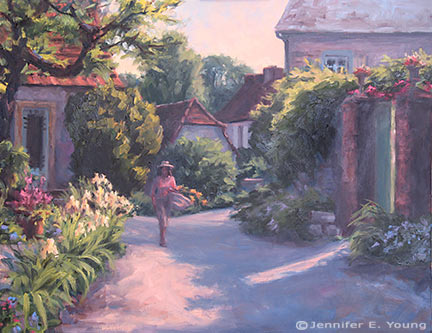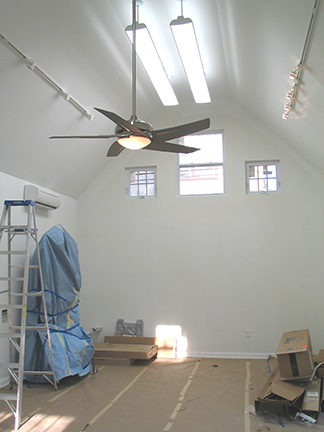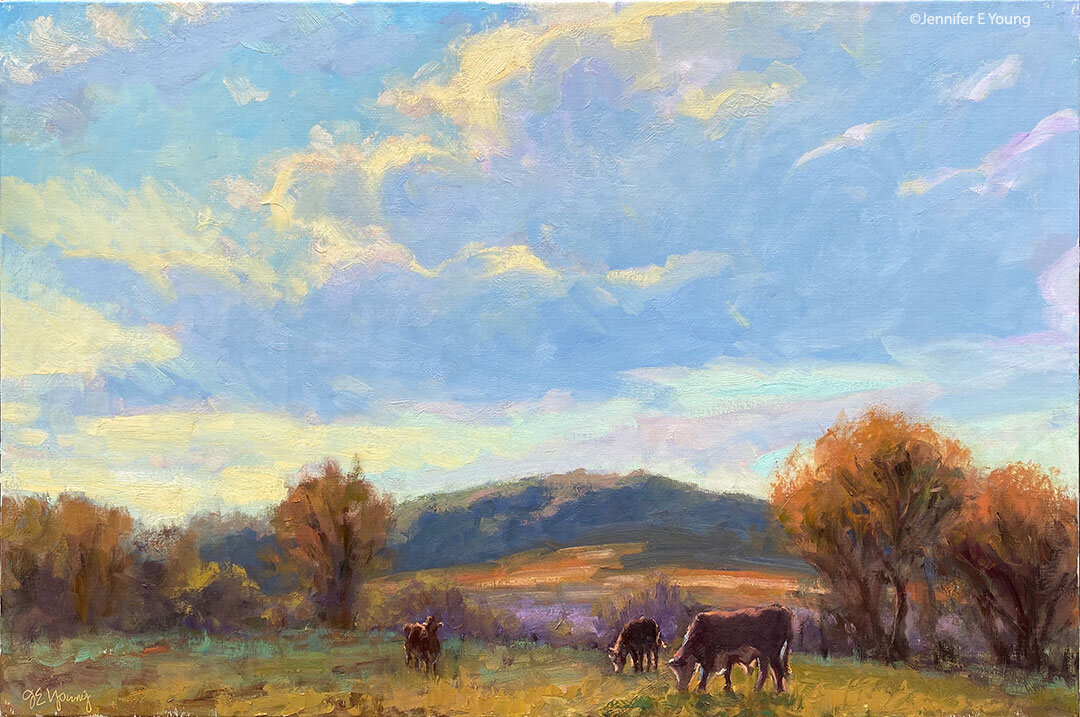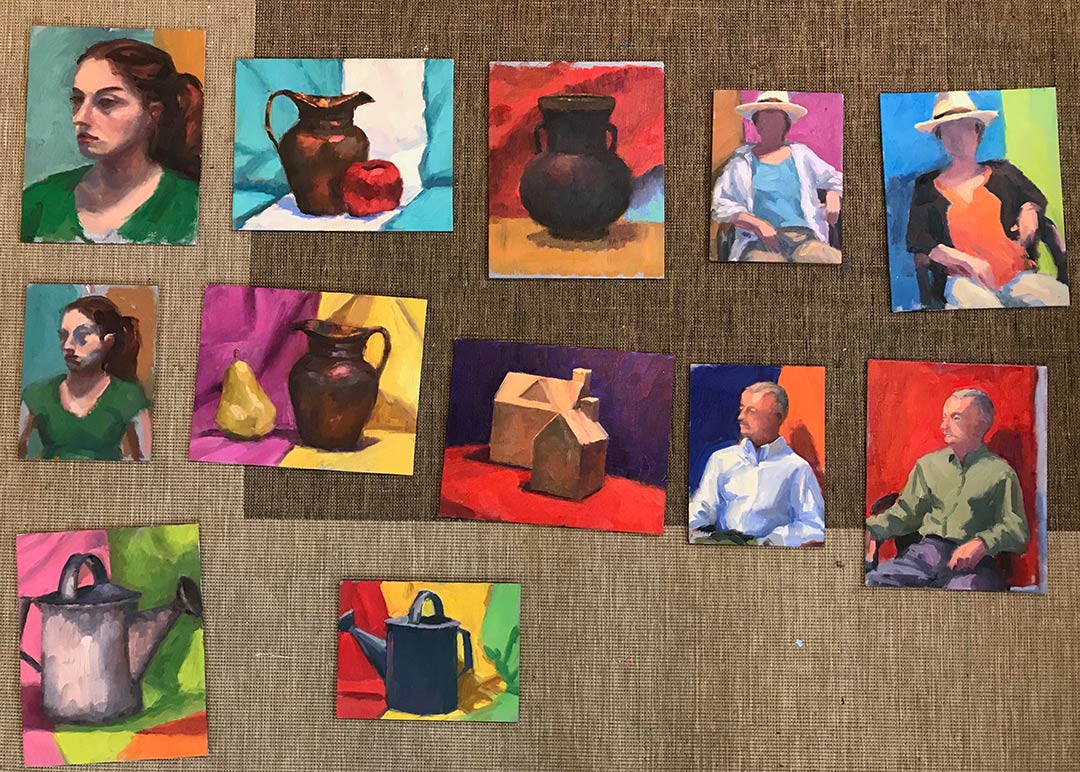From plein air study to studio painting
/This new paintingjust flowed. I finished it last weekend but couldn't photograph it until the sun came back. This painting is actually a larger, more developed piece derived from a plein air study I did last spring in France:
Here is the study:
Even though I took tons of photographs of this beautiful spot when I was there in France, I must say, having already done a memorable study of this scene helped me tremendously. The photos, even when edited to reveal more of the depths of the shadows, could not compare with the information I got from my little study.
I was inspired to work this painting out into a larger format after watching a really excellent DVD by Kevin Macpherson called "Winter Escape". This is a longish, 2 part DVD that is probably only fascinating to artists. To everyone else it might be a bit like "watching paint dry", so to speak. But art videos are a great for me especially on a cold winter Sunday during football season! I have only had a chance to see part 1 of the DVD so far...Kevin really takes his time in this one. But to me, it was great to see a fairly large painting develop stroke by stroke, with good explanations of his thought processes along the way. Throughout the process, he gives good explanations of how he uses his plein air studies to capture his in-the-moment responses, notes of color and light effects on site.
Now, there are lots of plein air painters who will pooh-pooh studio work (for landscapes). And while I do think that the best thing I've ever done for my landscapes is to take my easel outside for the direct experience, it just isn't always practical in terms of weather issues and size restrictions. An art studio is essential to me as it allows me to develop larger works and to experiment and expand on my ideas.
Macpherson seems to agree. Although he is known as a plein air painter (and rightfully so--he probably has thousands under his belt by now) he uses his studio in just this way, taking his studies and experiences he's gained on site and using them as jumping off points for his larger more fully developed work.
It was interesting though, to see how, because he has traveled and painted this landscape so often, he has so integrated his outdoor experiences to the point that he hardly referenced the photo he took. He mostly used his plein air studies (neither of which, by the way, exactly represented the larger painting he was creating on his easel.) The easel painting, was a compilation of elements from two or more plein air pieces, so I liked seeing that in no way did he feel the need to be literal. Rather than feeling bound and limited by one photographic viewpoint, he used his experience, memory, his studies, his beautiful brushwork and gorgeous color to conjure up his emotional response to the place. Ah, now that is painting!
As for me, my painting developed pretty quickly with the use of the study. I knew I wanted more sky in the larger painting, so I used a combination of a couple of different plein air paintings, plus my photos from the site in France to determine my layout. Where the photos are useful to me is that they can help to work out composition and form. But information about the color notes and the light were gained from my plein air experience. The other added bonus was that I nearly felt transported back to my original experience, (which was a real joy) much more so than painting from photos alone. That is no small feat too, consideringI'm painting in what amounts to a glorified closet right now and outside temperatures are in the 30's - 40's.
If I were not such a cold weather wimp, I would be painting outside even now. I can usually deal with the cold okay excepting my hands. Yes, I've tried fingerless gloves (useless) and hand warmers, but the minute my hands are out of my pockets, any amount of cold is actually pretty painful, and I can't paint in big puffy gloves! But, barring travel to some warm tropical location (not a possibility this winter, I'm afraid) painting from my plein air studies is the next best thing.


















